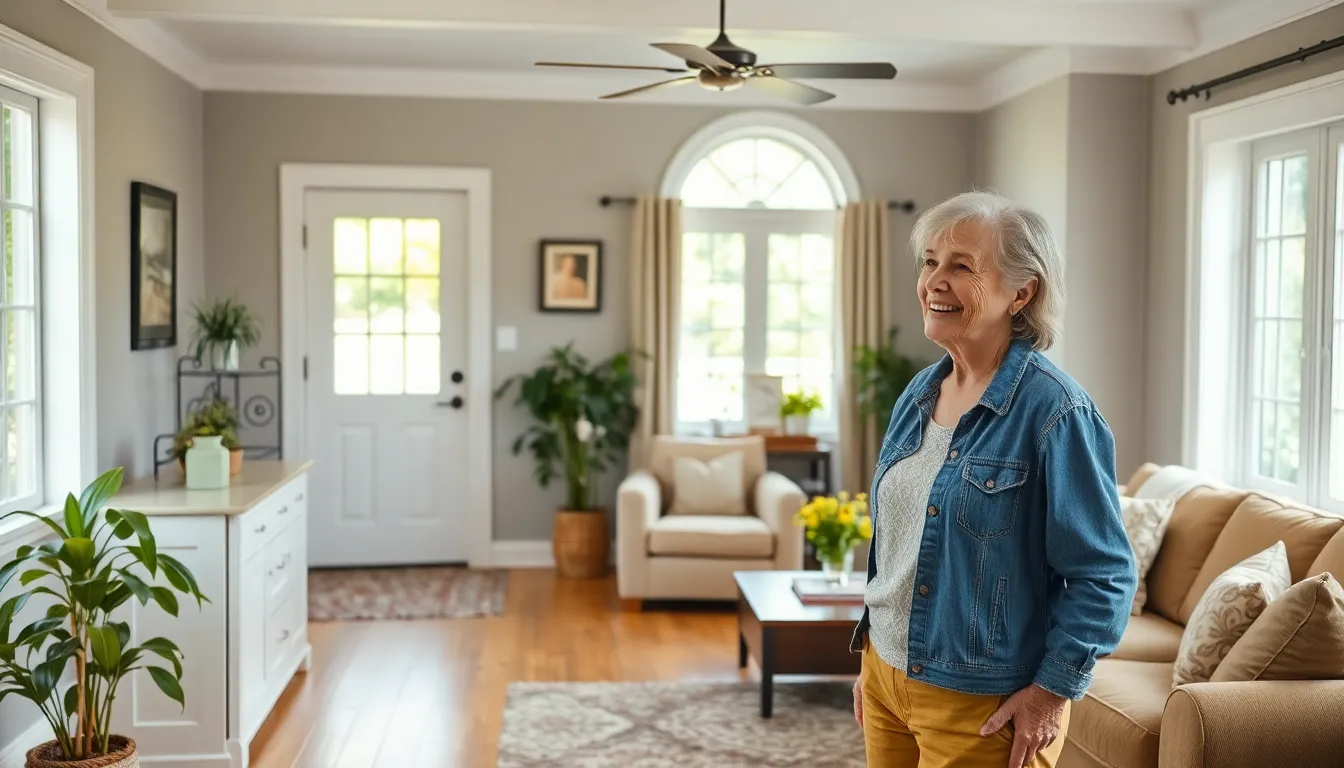As the years roll by, many folks find themselves pondering the big question: how can I stay in my beloved home without feeling like a contestant on a reality show called “Survivor: Senior Edition”? Enter aging in place renovation—the superhero of home improvement that swoops in to save the day. It’s all about transforming a house into a cozy haven that caters to the needs of aging residents while keeping the charm intact.
Imagine a home where every corner is designed with safety and comfort in mind, allowing its residents to age gracefully without the hassle of moving. With a sprinkle of creativity and a dash of practicality, these renovations can turn a standard living space into a sanctuary that feels just as good as it looks. So, let’s dive into the world of aging in place renovations and discover how to make a home not just a place to live, but a place to thrive.
Table of Contents
ToggleUnderstanding Aging In Place Renovation
Aging in place renovation focuses on creating living spaces where older adults can maintain independence. This approach modifies homes to enhance safety and comfort while allowing residents to stay in familiar surroundings.
Definition and Concept
Aging in place renovation entails home modifications tailored for seniors. These renovations typically include installing grab bars, widening doorways, and adding non-slip flooring. Accessibility features such as ramps and elevator installations also fall under this concept. Home designs emphasize open spaces and ease of movement to reduce hazards. Plans incorporate universal design principles, ensuring that all changes accommodate the evolving needs of aging residents.
Importance for Seniors
Seniors benefit significantly from aging in place renovations. Emotional health improves when individuals remain in familiar environments, fostering well-being. Safety increases with modifications that prevent accidents, allowing seniors to navigate their homes confidently. Independence remains intact, empowering residents to carry out daily activities with limited assistance. Financially, remaining in one’s home avoids the costs associated with assisted living facilities. Family members find peace of mind, knowing loved ones can live securely and comfortably.
Key Features of Aging In Place Renovation

The core elements of aging in place renovation foster safe and adaptive living environments for older adults. Focus on critical features that support these objectives.
Universal Design Principles
Universal design principles create inclusive spaces that accommodate varying abilities. Incorporating features like lever door handles promotes easier access. Open floor plans enhance mobility while reducing the risk of falls. Accessibility is emphasized through consistent floor surfaces that eliminate tripping hazards. Adjustable counters and cabinets allow for user-friendly interactions while cooking and accessing daily items. By embracing these principles, living areas transform into supportive sanctuaries tailored for aging individuals.
Safety and Accessibility Enhancements
Safety and accessibility enhancements target areas that pose risks in daily living. Installing grab bars in bathrooms minimizes the chance of slips during wet conditions. Non-slip flooring increases traction, especially in kitchens and entryways. Wider doorways enable wheelchair access and foster ease of movement throughout the home. Adding ramps and stairlifts improves accessibility for multi-level residences, allowing continuous independence. Smart home technology, like automatic lighting and security systems, further contributes to a secure and navigable environment. Prioritizing these enhancements assures a safer living space that adapts with changing needs.
Cost Considerations
Cost plays a significant role in planning aging in place renovations. Understanding the financial implications ensures a smooth transition to a safer living environment.
Budgeting for Renovations
Renovation costs can vary widely based on modifications. Small, impactful changes like grab bars and non-slip flooring typically range from $100 to $500 per item. Larger projects, such as adding ramps or expanding doorways, often fall between $1,000 and $5,000. Prioritizing essential safety upgrades ensures completion within budget constraints. It’s important to account for design services, which can add an additional 10% to 20% of the project’s total cost. Homeowners should create a detailed financial plan to clearly outline their funding sources and desired features.
Financial Assistance Options
Several financial assistance programs can ease the burden of renovation costs. Medicaid offers home and community-based services to eligible seniors for necessary modifications. Additionally, local government grants may provide financial help for low-income individuals seeking improvements. Non-profit organizations like Habitat for Humanity often assist with renovations tailored for seniors. Home equity loans also present another option, allowing homeowners to access funds tied to property value. Seniors should explore these avenues to identify suitable assistance programs that best fit their needs and circumstances.
Trends in Aging In Place Renovation
Aging in place renovation continually evolves, reflecting changing needs and preferences among older adults. Two notable trends include innovative technologies and eco-friendly solutions.
Innovative Technologies
Smart home devices play a significant role in enhancing safety and convenience. Motion-sensor lighting automatically illuminates pathways, reducing fall risks during nighttime. Voice-activated systems enable seniors to control appliances and communicate easily. Wearable health monitors help track vital signs, alerting caregivers in case of emergencies. Seamless integration of these technologies creates a supportive environment, fostering independence for older adults.
Eco-Friendly Solutions
Sustainable materials are gaining attention in aging in place renovations. Renewable resources, like bamboo flooring, offer durable and stylish options. Energy-efficient appliances not only reduce utility costs but also minimize environmental impact. Incorporating natural light through additional windows enhances the aesthetic appeal while promoting well-being. These eco-friendly choices align with aging in place principles, creating safe and sustainable living spaces for seniors.
Aging in place renovation stands as a vital solution for seniors wanting to remain in their cherished homes. By implementing thoughtful modifications and embracing universal design principles, these renovations not only enhance safety but also preserve the unique character of each residence.
The integration of modern technology and sustainable materials further elevates these living spaces, ensuring they meet the evolving needs of older adults. With careful planning and available financial resources, homeowners can create environments that foster independence and improve overall well-being.
Ultimately, aging in place renovation empowers seniors to live comfortably and securely, allowing them to thrive in familiar surroundings for years to come.



